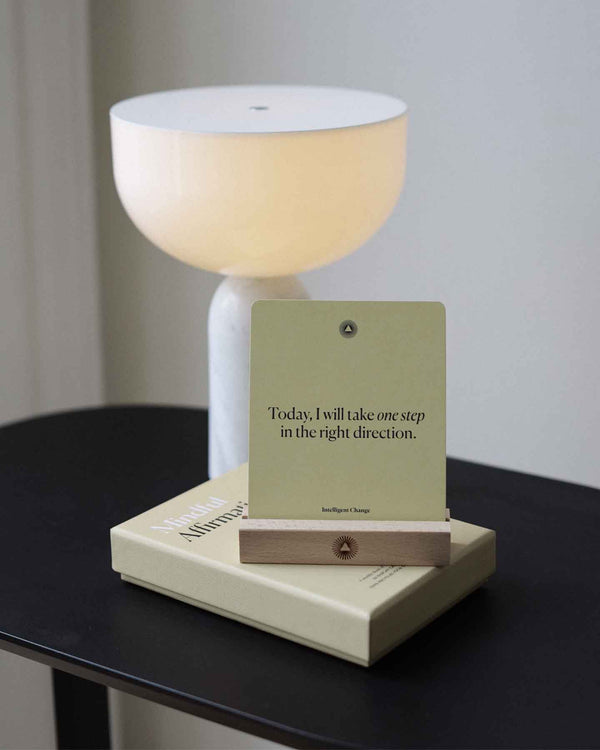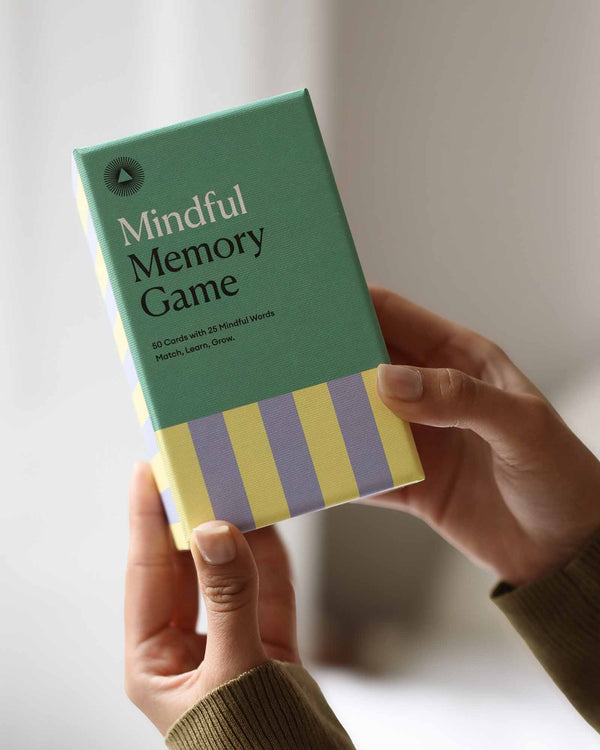Hearing Versus Listening
by Intelligent Change
In everyday communication, we usually use the terms “hearing” and “listening” interchangeably, but how many times have you heard someone say: “Do you even listen to what I’m saying” or “You’re hearing, but you aren’t listening to me”? While there are some similarities between the two terms, there are also some very important differences.
Listening to someone requires you to be an active and mindful participant in the communication who is present and puts in some additional effort to make a conversation valuable and meaningful. Hearing is something we can do passively, as it is an involuntary, natural process. For example, sometimes we begin to drift off during a conversation, become overwhelmed, or think about how we want to respond. There are so many things that occupy our mental space when we should pay close attention and be fully immersed in a conversation.
When the mind starts to wander, our ears continue to work. We can hear the other person, but we are not truly listening to them. We are passively perceiving the sound of their words as a background noise, while our mind is busy focusing on something else. If this happens often, then the other person feels your distance, lack of interest, and withdrawal from the conversation, which may lead to miscommunication and relationship problems.
If you want to master the skill of mindful listening and build strong, deep relationships, you should learn the difference between hearing and listening. This will make people around you feel important, understood, and valued, and it will also help you gain a better understanding of the world and the people around you.
In this article, we’ll bring the similarities and the differences between these two activities closer to you, and try to explain in a comprehensive manner how to become a better listener.
What Is Hearing and What Is Listening?
Hearing is the psychophysiological process of detecting vibrations-––sound waves––through the ear that convert into what we perceive as sound. Hearing is something that is ever-present, regardless of whether we’re focused on those sensations or not. Sometimes, during work, we play music to help us concentrate. Although we hear the music, we are not necessarily listening to it. We are working, and music is playing in the background.
As you can see, higher processes like consciousness or the construction of meaning are not necessarily involved in the process of hearing. However, if your interlocutor’s voice and words end up as the background music to your thoughts, they might feel neglected and even offended.
People engage in conversation because they want to connect and feel understood, heard. Intellectual dialogues, discussions, and the sharing of emotions require a two-way engagement.
And that’s what listening is. It’s a two-way interaction that requires us to connect with our interlocutor, focus on their words, pay mindful attention to what they say, analyze non-verbal communication, and stay aware and present.
Although both processes rely on the hearing apparatus and sound detection, the two seem so different. However, they are actually in a dynamic relationship, as hearing is necessary to collect the information, and listening is necessary to put that information in a context and give it meaning.
Active Listening
Whenever we listen to someone with the intention to understand and contribute to the communication, it’s called active listening. Active listening is also a therapeutic technique that involves several other processes:
- Staying neutral: active listening means staying free of judgment.
- Patience: giving the other person time and space to express themselves.
- Feedback: smiling, nodding, eye contact, etc.
- Questions: when you actively listen, you also ask the other person more questions about their story, helping them to overcome barriers and share their truth.
- Reflection: you can reflect on what the other person is saying by sharing your experience on the same topic, or by stating how their story makes you feel.
- Clarification: it can also be helpful for both you and the other person if you ask them to clarify something they have stated earlier, as it will show that you are listening, and it will make the story clearer for both of you.
- Summarizing: every once in a while during the conversation you can summarize what your interlocutor has told you so far, and they can confirm your summary, or correct it.
Why Are Hearing and Listening Important for Our Wellbeing?
Since hearing is a psychophysiological process, its most important role in our lives is to inform us of the events in our environment. For example, if we are focused on one activity and there is a sudden loud sound, our ability to hear will immediately switch our attention to the noise, as it may signalize danger.
Hearing helps us navigate through our environment and only those who have lost this sense are aware of how important it is in discovering and creating knowledge about the world. It is estimated that our ears perceive around 100,000 bits of information per second, and imagine how much that adds up to on a daily or weekly level.
Listening, on the other hand, is a way to connect with other people. People who use sign language can be active listeners as much as those with the ability to hear can. This alone tells us that listening is an uber process. It helps us develop empathy, feel connected to other people, and do something meaningful for another person.
It is an important asset in achieving mental wellbeing and building healthy relationships. Try to remember a situation when someone you wanted to talk to wasn’t listening to you.You may have experienced devaluation, loneliness, lack of respect and love, and anxiety.
Listening allows us to create strong bonds, exchange life-changing knowledge and insights, have shared memories, tell stories, and solve problems and conflicts with more efficiency and better outcomes.
How to Become a Good Listener
In which role do you see yourself more often: “hearer” or “listener”? Even if you are a very good listener, there is always room for improvement. After all, you wouldn’t be here reading this article if there were no desire to discover more techniques of mindful and active listening.
Here are some tips on how to become a better listener.
Show Curiosity
Listening to other people is all about having a genuine interest to hear and understand what the other person is talking about. Hearing them out and focusing on what they’re saying should raise greater interest than thinking about how to formulate a good response.
Showing curiosity makes the other person feel seen and important. It communicates that you’re really paying attention to them and that you’re fully engaged in the conversation. As you adopt this mindset, you will notice how you naturally become more and more interested in the conversations.
Set Intentions and Goals to Improve Your Listening
Ask yourself: Why do I want to be a mindful listener? How will it help me? What difference will it bring to my and my loved ones' lives? List several indicators that will actually be the achievements you strive towards and set them as your goals. To have a clearer direction for your goals, you can also set up your broader intentions regarding listening skills, and think about the methods, time, and people to practice them with.
Be Mindful and Present
Slow down and become more focused on the things around you. What has your attention right now? If there’s a person talking, and you’re not present, how can you redirect your focus to them? Listen to the voice color of your interlocutor, their tone of communication, choice of words, non-verbal language. What can you discover from these?
Ask Open-ended Questions
As you ask questions, you will want to avoid the yes/no type of questions, and rely more on open-ended interrogations that require elaborate answers, questions that spark meaningful conversations and challenge the participants to open up and share more. These will leave enough room for other active listening elements such as asking follow-up questions, clarification, and reflection.
No Judgement
While judging is a normal cognitive process, it also limits our mind to certain information only, as a judgmental mind is less likely to pay attention and listen to the other person openly and accept another point of view. Try to let go of your judgments as you talk to the other person. Ask more questions to broaden your views on the topic.
Summarize
Giving summaries of what’s been told during the conversation will make the other person feel heard and valued and it also shows your engagement. Summaries are also a great opportunity to correct and clarify any potential misunderstandings.
Anchor Yourself to the Topic
If you want to have an engaged conversation, avoid jumping to topics that don’t really have much to do with the main conversation line.
If you tend to get compulsive during conversation and have an urge to jump in with new ideas and topics, try to focus and anchor yourself to the main reason why this conversation is even happening, and stick to it until it’s over. Put all other thoughts on hold: recognize their presence and let them go.
Accept When You’re Wrong
If you struggle to admit your fault when you’re wrong and say you’re sorry, active listening may be very challenging for you. Active listening is about hearing the other person, connecting through conversation, and constructing the narrative of your relationship together, rather than being right at all cost.
If you think this applies to you, don’t worry. This is something you can work on. Some of the activities that may help you boost your ability to accept criticism and admit when you’re wrong are journaling, talking to a therapist, being attentive, and taking a pause to digest what you’ve heard before responding.
Allowing pauses to take place in communication is really important because it makes you less reactive and gives you greater control over your behavior. Sometimes, when we don’t think our reactions through, we end up hurting other people. On the other hand, taking 10 seconds to pause, do a deep breath exercise, and reflect before responding can help us learn how to calm down and recognize our mistakes,
Nonverbal Communication
Nonverbal communication cues are as important as all the verbal techniques of active listening. Some instances of nonverbal communication are leaning in towards the person, establishing eye contact, nodding your head, changing your facial expression in accordance to the emotional tone of the conversation, as well as physical contact, if appropriate.
Stop Filling in the Blanks
Practicing how to listen is an excellent opportunity to stop filling in the blanks in stories. Sometimes, when people tell stories, there may be many parts that are missing, and instead of clarifying and asking about those parts, we usually just fill in the blanks in our minds, assuming that something has happened one way or the other.
Instead of filling in the blanks like this, go back to asking questions and help your interlocutor elaborate on their answers.
Validate
While active listening itself is already a form of validation, you can add more spice to the situation. Try to acknowledge the other person’s thoughts and feelings and understand them in the context of their past, current situation, and character.
Slow Down the Communication
To create a friendly and relaxed environment where people can open up, don’t jump to conversation quickly and by force. Leave time for small talk that warms you both up and helps reduce initial anxiety.
As the conversation goes on, don’t rush through it. Try to ease things down. Rushing can lead to arguments and discussions when all you want to have is a meaningful, engaging dialogue.
Give Advice Only When Explicitly Asked
Giving advice can be seen as problematic in many contexts. Those who are prone to sharing advice usually put themselves into a position of power, as they appear to be the ones with the privilege of their knowledge.
However, people you give your advice to can feel intimidated and invalidated because, sometimes, all that your interlocutor wants is to be heard, they don’t need any additional feedback or instructions on what to do or how to live their lives. That’s why you have to be very careful with giving advice and do so only when explicitly asked.
Instead of advice, you can share your own story or experience that is somehow analogous to your interlocutor’s.
Eliminate Distractions
Although contemporary life is full of different distractions, especially with the presence of our electronic devices, it is crucial to eliminate distractions while having a conversation. For example, you can put your phone on silent mode and place it in your bag or your pocket, or you can put it face down on the table to show the other person that you are not going to look at the screen while you talk.
Practice Active Listening
You can do these little exercises with people you’re close with, so you can both learn how to become better listeners together.
For example, in one session, you can tell a personal story of 5-10 minutes, and after a short break, the other person also tells their story.
Then, you sit down and take some time to discuss the experience:
- How did it feel to be listened to?
- How did it feel to freely share your story?
- Analyze the details of the stories.
- Ask each other about any information that is maybe missing or need clarification.
- Summarize each others’ story.
Conclusion
Although we all appreciate and enjoy being heard, many of us still don’t know how to truly listen to one another. Listening with patience, awareness, genuine interest, and engagement is not always simple. We have so many things going on in our lives that it’s perfectly understandable that we can’t always be active and present in every conversation.
That’s why learning different methods and techniques on listening can be a huge game changer in this field. Every effort you make towards becoming a better listener brings you a few steps closer to the other person and makes your connection and relationship stronger and healthier.
All people like to be heard and listened to. The stranger on the street, your best friend, your partner, your family member, or co-worker. Although some people open up more easily than others, the same rules of active listening apply to all types of relationships and situations.









